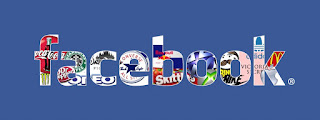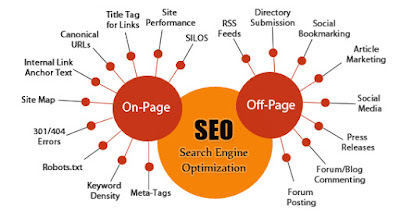Search
engine optimization (SEO) is "the practice of increasing the quantity and
quality of the traffic that you earn through the organic results in search
engines,"
Search
engine optimization is a methodology of strategies, techniques and tactics used
to increase the amount of visitors to a website by obtaining a high-ranking
placement in the search results page of a search engine (SERP) -- including
Google, Bing, Yahoo and other search engines.
It
is common practice for Internet users to not click through pages and pages of
search results, so where a site ranks in a search is essential for directing
more traffic toward the site. The higher a website naturally ranks in organic
results of a search, the greater the chance that that site will be visited by a
user.
SEO
stands for “search engine optimization.” It is the process of getting traffic
from the “free,” “organic,” “editorial” or “natural” search results on search
engines.
Search
Engine Optimization is the process of improving the visibility of a website on
organic ("natural" or un-paid) search engine result pages (SERPs), by
incorporating search engine friendly elements into a website. A successful
search engine optimization campaign will have, as part of the improvements,
carefully select, relevant, keywords which the on-page optimization will be
designed to make prominent for search engine algorithms. Search engine
optimization is broken down into two basic areas: on-page, and off-page
optimization. On-page optimization refers to website elements which comprise a
web page, such as HTML code, textual content, and images. Off-page optimization
refers, predominantly, to backlinks (links pointing to the site which is being
optimized, from other relevant websites).
SEO
or Search Engine Optimization is the name given to activity that attempts to
improve search engine rankings.
In
search results Google displays links to pages it considers relevant and
authoritative. Authority is mostly measured by analyzing the number and quality
of links from other web pages.
In
simple terms your web pages have the potential to rank in Google™ so long as
other web pages link to them
Search
engine optimization (SEO) is the process of affecting the visibility of a
website or a web page in a search engine's unpaid results - often referred to
as "natural," "organic," or "earned" results. In
general, the earlier (or higher ranked on the search results page), and more
frequently a site appears in the search results list, the more visitors it will
receive from the search engine's users. SEO may target different kinds of
search, including image search, local search, video search, academic search,[1]
news search and industry-specific vertical search engines.
As
the colors of the types of search engine optimization suggest, there are stark
differences in the approach and long-term results of white hat and black hat
search engine optimization. Though both types of SEO have their proponents,
most companies/websites with long-term, stable, and sustainable goals will tend
to stay away from the dark-colored variety.
Here
is a quick overview-
White
Hat SEO:-
refers to the usage of optimization strategies, techniques and tactics that
focus on a human audience opposed to search engines and completely follows
search engine rules and policies.
Definition
White hat SEO utilizes techniques and methods to improve the search engine
rankings of a website which don't run afoul of search engine (mainly Google)
guidelines.
Black
Hat SEO
:- refers to the use of aggressive SEO strategies, techniques and tactics that
focus only on search engines and not a human audience, and usually does not
obey search engines guidelines.
Gray
hat SEO:-
recognizable by 'affordable' pricing,
since the search engine optimization company has to reduce cost by resorting to
questionable techniques in order to deliver results, instead of highly involved
campaign activities.
In
the end there is really no 'right' or 'wrong' way to do search engine
optimization, but those shopping for SEO services should be aware of the
different types and approaches so that they know the level of risk they are
taking on.
On-Page
SEO
refers to how well your website’s content is presented to search engines. This
type of SEO gets your site on the list of search results for a given keyword
search and can usually be improved quickly.
Even
though it accounts for only about 25% of how search engines score and rank your
website, it is worth making it the first step of your SEO strategy since it is
easy enough to do and provides almost immediate improvement.
Off-Page
SEO
refers to your site’s “authority” on the Internet, which is determined by what
other websites “say” about your site. Off-page SEO is about getting your site
to the top of the list of search results, and usually takes time to improve.
On
page and off page optimization are two most touted words in the field of search
engine optimization. Though the on-page vs off-page debate is as old as Google,
it is still an area of constant debate. But the truth is both are vital to the
success of an online business. Though the world of SEO has changed forever with
the evolution of social media, it is very important for online businesses to
understand the relevance of these two processes in order to get organic traffic
from search engines.
On page Optimization
On-Page
SEO refers to how well your website’s content is presented to search engines.
On page optimization involves ensuring whether a particular webpage is
structured in a manner so that it gets found by the search engines for given
keywords and key phrases. It not only helps in getting good search engine
ranking but also increases overall readability of the site. The best part is
that not much has changed about the on-page optimization approach. It can still
be improved immediately by tweaking incorrect elements on a webpage.
There
5 key elements of a successful on page optimization.
1.
Page copy
A
good content copy is really the key to your success. It is an open secret that
you need to produce original, unique and high quality content of relevance on a
continuous basis to perform well and rank high on search engines. There are few
things you need to keep in mind while creating the content copy.
2.
Title Tags
Arguably
title tag is the most important element among the “big three”, the other two
being page copy and inbound links. Title tag contains the words which appear in
the clickable link of the search engine result. Google has limited the page
titles up to 70 characters, so it is extremely important that your title tags
are keyword-relevant yet concise. For example, when looking up in Google for a query, you might
have noticed the chopped off title tags in few results, that’s because the
title tags for that page are too long.
3.
Meta Data
Meta
data is a well written description summarizing the content of a particular
webpage. It was majorly devalued because of a wide practice of spam
techniques. Google crawlers though look at the Meta keywords to get an idea
about the topicality of the page content. Meta descriptions have to be created
within a limit of 155- 160 characters which essentially should not include
anything but alphanumeric characters.
4.
Heading Tags
These
are the tags which define the content of your page section wise, just like
traditional headings and subheadings. There should be one <h1> tag every
page, which should include the most relevant key phrase or key word. This tag can
be created uptill <h6>, though general practice is to use this till
<h3>.
5.
Interlinking
Strategically,
linking one of your website pages to other similar pages on your website
provides context to the search engine and to the readers as well. Some best
practices are:
Off-Page
SEO refers to your website’s overall “authority” on the web determined by what
other websites say about your site. Off-page optimization is a long-term
process and takes time to improve. Simply put, off page is all about your
online reputation. Off page optimization includes acquiring backlinks to your
page from the authority sites in your niche. Backlinks is the currency of any
off-page strategy. And, unlike on-page optimization, off-page optimization
efforts are not apparently visible on the webpage itself; it does the
background work for a better search result.
1.
Acquiring Backlinks
Acquiring
backlinks to your pages from higher authority sites is now more important than
ever. Search engines treat link popularity as one of the key factors for a
better search engine ranking. Though, link popularity is not the top ranking
factor anymore, as it can easily be manipulated.
2.
Leveraging social interaction with your site
Use
of social metrics or social engagement
as a ranking factor is an increasing trend. Besides backlinks, Google
now gives prominence to social signals around your content. Whether it’s the
number of people who tweet, ‘Like’, social bookmark, or “vote” via Google +1
for your content, your site’s social footprints has a direct relation with your
rankings. SEO has now evolved into social.
3.
Promote your content via social channels
Make
sure to promote your content through multiple social media channels to obtain
some social media traction. You can use multiple platforms to engage your
audience, keeping the focus on the ones creating maximum buzz for you. There
are various platforms at your exposure:
Facebook
Facebook
is the social platform with maximum number of active users at this moment. You
can share your content there but don’t use a promotional tone, rather keep it
light as people come to Facebook mostly with an intention of socializing in a
casual mood. Specially interesting and light topics with pictures get more
attention in the form of Likes and Share on Facebook.
You
can distribute your content on both these platforms. You can share your content
in the form of an article, video, image or even in the form of a simple
update. You can join relevant LinkedIn
groups and share you articles there too.
If you have content of great quality you’ll surely be able to create buzz
around it.
Google+
It
has become very important to share any content you create on Google+, as it is
from the search engine provider itself. Recently, there is a lot of noise that
Google+ has a indirect correlation with your website’s ranking in the search
engine. Google also have introduced a new feature called Google Authorship.
Pinterest
Pinterest
is the latest social media sensation. The image sharing website allows you to
share pictures from your post to appeal to your target audience. If you have an
e-commerce site, Pinterest can help you drive your sales.
Q&A
This
is a question & answer platform where a lot of people come searching for
the solution to different problems and queries. You can post your content or
your opinion in any of the relevant discussion thread and readers can up vote
or down vote it. This is in fact the future of commenting. The platform can
help you establish yourself as a subject matter expert in your field.
You
can create informational videos on topics like make-up tips or different
marketing strategies to share them on free video hosting sites like Vimeo,
YouTube etc. generating billions of unique viewers every month.
4.
Add social book markings
Social
bookmarking is one of those old yet useful off-page SEO techniques being used
from the pre-Panda and Penguin age. There are many sites like Tumbler,
Stumbleupon, Reddit, Delicious, Digg being the most prominent ones, where
people come in searching for different content
topics.
5.
Guest Blogging
Another
way of acquiring strong back links in post Panda era is guest blogging. You
have to create relevant and high quality content and submit to the blogs with
higher page ranks.. But remember, you should not do it just for the sake of
getting back links and also submitting articles to substandard blog sites is
not going to fetch you desired benefit.

+91-9782941338
**Thank You So Much**

























